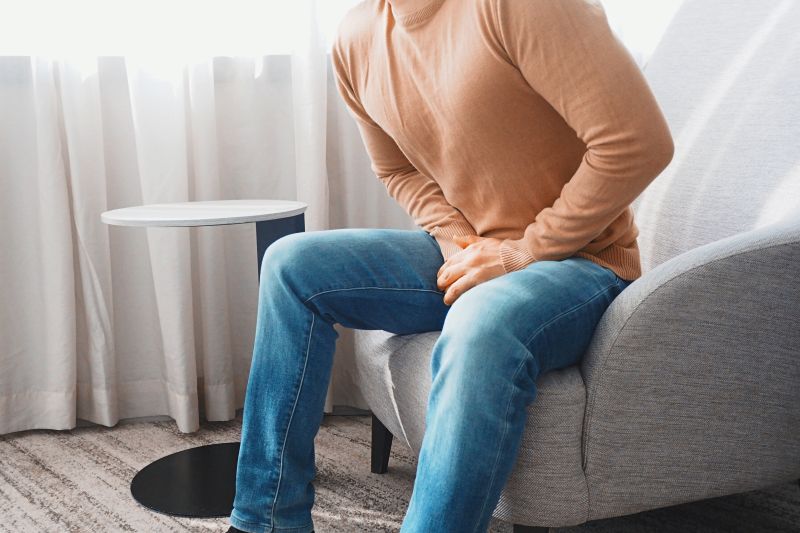
Painful ejaculation, also referred to as dysorgasmia or orgasmalgia, is exactly what it says, pain in the genitals or groin area right before, during or after ejaculation for a variable amount of time – from just a few seconds and up to two days. The sensation can range from a dull ache to unbearable pain and can be localized to the penis (including the urethra), testes, perineum, or further into the lower abdomen or rectum.
Despite a lack of reporting, painful ejaculation is fairly common; according to several studies, the number of reported experiences of painful ejaculation ranged from 1.9-25% of men involved. Due to the lack of knowledge, it is a phenomenon that is often ignored or misunderstood.
Painful ejaculation usually has a cause, but when it does not this is considered idiopathic dysorgasmia. Possible causes of painful ejaculation include:
Infectious or Inflammatory Causes
- Epididymitis: Occurs when there is inflammation in the epididymis, the structure on the back of the testicle that stores and transports sperm. It is usually caused by an infection, such as a sexually transmitted infection (STI), E. coli, or mumps. Epididymitis is usually treated with antibiotics.
- Orchitis: Defined as swelling or inflammation in one or both testes, it often occurs alongside epididymitis. It is usually caused by urinary tract infections (UTIs), STIs, or infections like chickenpox, mumps, streptococcus (strep), and others. Orchitis is typically treated by antibiotics as well.
- Urethritis/Urethral Syndrome: Irritation of the urethra (which carries urine and semen out of the body) that can be caused by a variety of things including injury to the urethra, UTIs, STIs, strictures (narrowing of the urethra), chemotherapy, and even certain foods. Urethral syndrome is usually treated with conservative measures such as lifestyle changes, medications, and cognitive therapies for pain management.
- Balanoposthitis: Defined as inflammation at the head of the penis and foreskin, it usually only affects those who are uncircumcised. It can be caused by poor hygiene, fungal infections, STIs, diabetes, or allergies to contraception or sexual aids (condoms, lube, etc.). Balanoposthitis can be treated with antibiotics, antifungal creams, better hygiene, and circumcision.
- Prostatitis: Also known as inflammation of the prostate, the gland which sits just below the bladder in biological males and makes seminal fluid to support sperm. It can be caused by inflammation, bacterial infections, or chronic pelvic pain syndrome and may be treated by anti-inflammatory drugs, antibiotics, prostate medications, or other therapies.
Chronic Pelvic Pain Syndrome (CPPS)
CPPS is pain in the pelvic region (between the hips). It can be due to prostatitis, musculoskeletal (muscular and bone) problems, nerve injuries, long-term STIs, irritable bowel syndrome, or bladder issues. Sometimes these issues, such as nerve injuries, can be linked to movements in the pelvis during sexual activity. CPPS can happen on its own or be indicative of another problem. Depending on how it has developed, treatments range from anti-inflammatories and antibiotics (for infections) to physical therapy and other pain management techniques.
Benign Prostatic Hyperplasia (BPH)
Otherwise known as an enlarged prostate, BPH is most commonly found in older men due to natural growth of the gland with age. Pressure on the urethra from the growing prostate may cause discomfort during ejaculation. Treatments for BPH include alpha blockers, 5-alpha reductase inhibitors, daily tadalafil, and sometimes surgery.
Prostate Cancer
Painful ejaculation is not a typical sign of prostate cancer but worth mentioning as a possibility. About 1.3 out of 10 biological males will develop prostate cancer (in the prostate gland) at some point in their lives. Some risk factors for prostate cancer include age, family history of prostate cancer, genetics, and race. The most common treatments for prostate cancer include surveillance (watching to see if the cancer grows or changes), radiation therapy, or hormone therapy.
Radical Prostatectomy (surgery to remove the prostate)
According to a 2019 study, following prostate cancer surgery up to 19% of patients reported painful orgasm. This symptom is more common within the first few years post-operation with improvement reported between 12 and 60 months in some men. It has been theorized that orgasmic pain may come from muscle spasms in the bladder neck or pelvic floor while healing. Pelvic floor physical therapy or alpha blockers may be helpful treatments.
Ejaculatory Duct Obstruction (EDO)
Defined as a blockage in the ejaculatory duct (which carries sperm and fluid from the seminal vesicles through the prostate to the urethra) and possibly caused by scar tissue, cysts, frequent UTIs, prostatitis, and epididymitis. EDO may be treated with a surgery to open the obstruction in the duct via a telescope in the urethra. EDO is very uncommon and requires testing and imaging to determine if a procedure could be helpful.
Medications
Certain antidepressants or muscle relaxants may cause painful ejaculation for some men, according to recent research. Treatment options would include reducing the dosage or changing medication type. Always consult with your health care provider before making any changes to your medication.
Conclusion
Painful ejaculation can occur as a result of a variety of conditions, including inflammation, infections, pelvic problems, and rarer conditions. Diagnosis can come in many forms, but usually in the through infectious testing and sometimes imaging (ultrasounds, etc.). Treatments range from conservative options (lifestyle changes or physical therapy) to medications (anti-inflammatories, antibiotics, alpha blockers such as tamsulosin), to possible surgeries in select cases. Because it is underreported and under-studied, it’s important to pay attention to pain during and after intercourse and to speak with a healthcare provider.
References:
Balanoposthitis: Causes, symptoms, diagnosis & treatment. Cleveland Clinic. (2025a, March 19). https://my.clevelandclinic.org/health/diseases/24117-balanoposthitis
Capogrosso, P., Ventimiglia, E., Cazzaniga, W., Montorsi, F., & Salonia, A. (2017). Orgasmic dysfunction after radical prostatectomy. The World Journal of Men’s Health, 35(1), 1. https://doi.org/10.5534/wjmh.2017.35.1.1
Ejaculatory duct obstruction: Causes, symptoms & surgery. Cleveland Clinic. (2025b, February 10). https://my.clevelandclinic.org/health/diseases/22819-ejaculatory-duct-obstruction
Kraus, M. B., Wie, C. S., Gorlin, A. W., Wisenbaugh, E. S., & Rosenfeld, D. M. (2015). Painful ejaculation with cyclobenzaprine: A case report and literature review. Sexual Medicine, 3(4), 343–345. https://doi.org/10.1002/sm2.93
Mayo Foundation for Medical Education and Research. (2024a, September 24). Benign prostatic hyperplasia (BPH). Mayo Clinic. https://www.mayoclinic.org/diseases-conditions/benign-prostatic-hyperplasia/diagnosis-treatment/drc-20370093
Mayo Foundation for Medical Education and Research. (2024b, November 15). Chronic pelvic pain. Mayo Clinic. https://www.mayoclinic.org/diseases-conditions/chronic-pelvic-pain/symptoms-causes/syc-20354368
Mayo Foundation for Medical Education and Research. (2025, February 22). Prostatitis. Mayo Clinic. https://www.mayoclinic.org/diseases-conditions/prostatitis/symptoms-causes/syc-20355766
Prostate cancer: Symptoms, causes & treatment. Cleveland Clinic. (2025, March 19). https://my.clevelandclinic.org/health/diseases/8634-prostate-cancer
Urethral syndrome: Causes, symptoms & treatment. Cleveland Clinic. (2025c, March 19). https://my.clevelandclinic.org/health/diseases/24300-urethral-syndrome
What is epididymitis?. Cleveland Clinic. (2025d, February 10). https://my.clevelandclinic.org/health/diseases/17697-epididymitis#symptoms-and-causes
What is nongonococcal urethritis (NGU)?. Cleveland Clinic. (2025e, February 7). https://my.clevelandclinic.org/health/diseases/4426-nongonococcal-urethritis
What is Orchitis?. Cleveland Clinic. (2025f, February 9). https://my.clevelandclinic.org/health/diseases/21658-orchitis
You may also be interested in...
Other Popular Articles
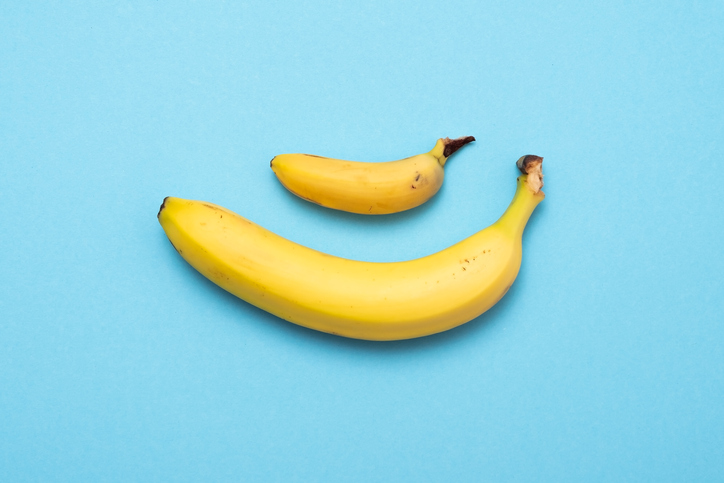
What Is Jelqing, and Does It Actually Work?
The term “jelqing” refers to a set of penis stretching exercises that some believe can make the penis bigger. Although the practice has gained attention and popularity in blogs and internet forums in recent years, there is no scientific evidence that it is an effective way to permanently increase the size of one’s penis. In fact, in some cases, jelqing may actually cause damage to the penis, so it is a good idea to get all the facts before setting off to try it.
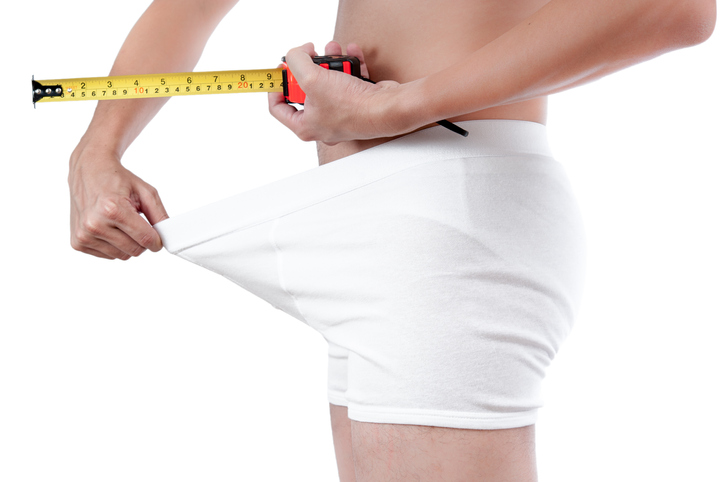
What Is the Average Penis Size?
If you have ever wondered how your penis compares to others in terms of size, you are not alone. Many men are curious to know how their penises stack up compared to the average. Unfortunately, general curiosity can sometimes give way to full-on obsession and anxiety about penis size. This can be an unhealthy and often unnecessary fixation, especially because most men who think their penises are too small have perfectly normal-sized penises.
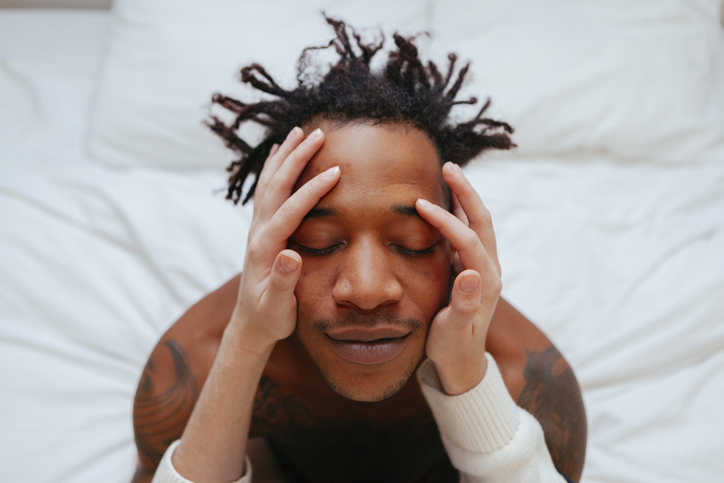
What Is Sensate Focus and How Does It Work?
Sensate focus is a technique used to improve intimacy and communication between partners around sex, reduce sexual performance anxiety, and shift away from ingrained, goal-oriented sexual patterns that may not be serving a couple.
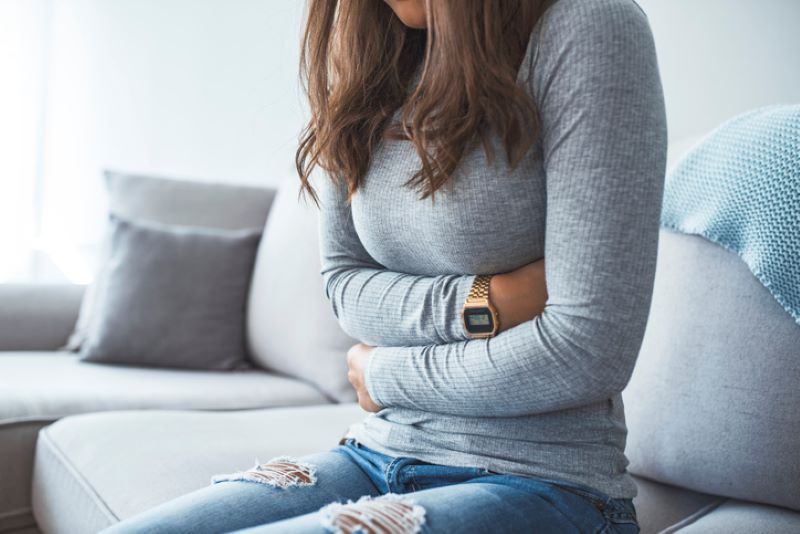
Can Sex Reduce Menstrual Cramps?
The SMSNA periodically receives and publishes ‘guest editorials.’ The current article was submitted by Mia Barnes, a freelance writer and researcher who specializes in women's health, wellness, and healthy living. She is the Founder and Editor-in-Chief of Body+Mind Magazine.
Having sex while you experience menstrual cramps is healthy and can provide significant benefits. While it might not be the first activity that comes to mind when your PMS or period cramping begins, many people enjoy sex to reduce menstrual cramps, experience increased pleasure and benefit from other advantages. Learn more about having sex while menstrual cramps are happening and how it can help your body.

How Long Does It Take the Average Man to Ejaculate?
On average, it takes a man between 5 to 7 minutes to orgasm and ejaculate during sexual intercourse.
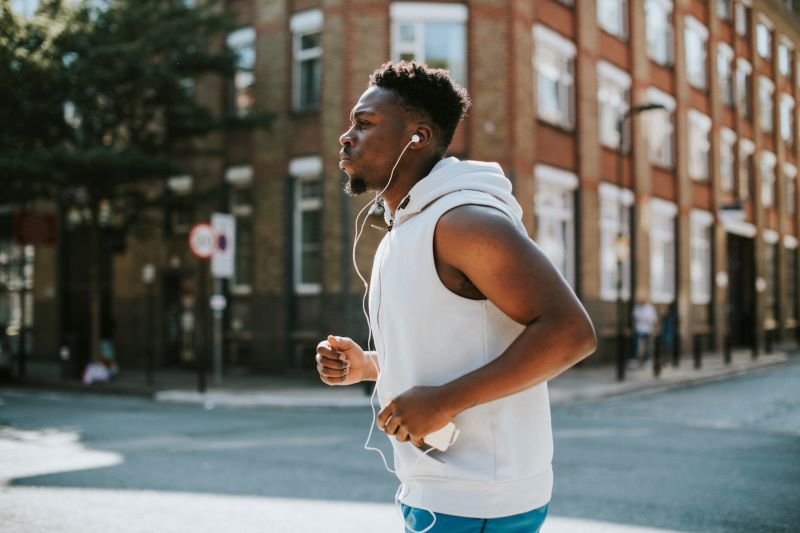
The Effect of Regular Aerobic Exercise on Erectile Function
Erectile dysfunction (ED) is the inability to achieve or maintain an erection sufficient for satisfactory sexual activity. As men get older, their erectile functioning may naturally decline due to changes in testosterone levels, cardiovascular functioning, and the potential development of other chronic medical conditions that become more common with age.
You are prohibited from using or uploading content you accessed through this website into external applications, bots, software, or websites, including those using artificial intelligence technologies and infrastructure, including deep learning, machine learning and large language models and generative AI.

